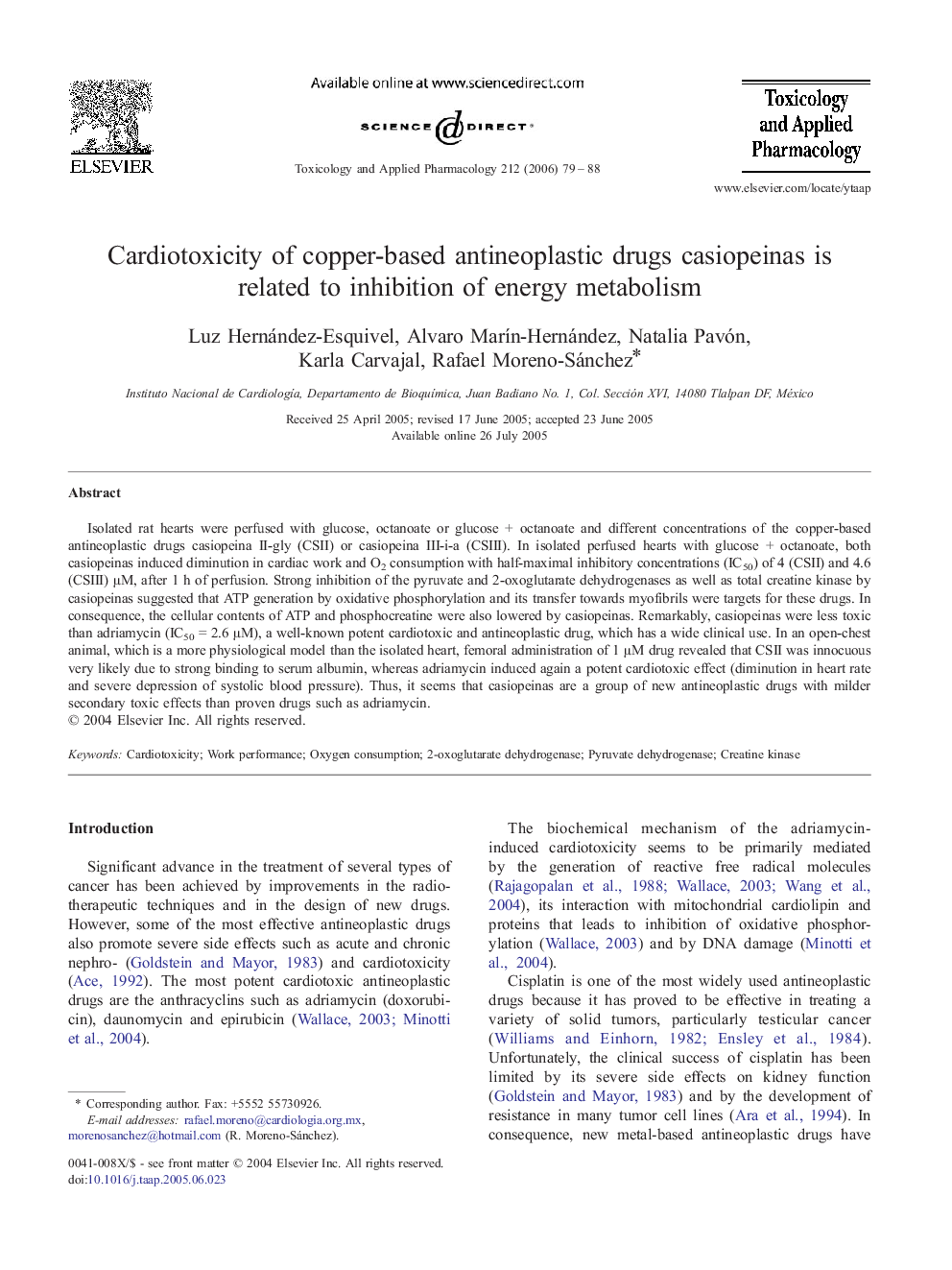| Article ID | Journal | Published Year | Pages | File Type |
|---|---|---|---|---|
| 2571868 | Toxicology and Applied Pharmacology | 2006 | 10 Pages |
Isolated rat hearts were perfused with glucose, octanoate or glucose + octanoate and different concentrations of the copper-based antineoplastic drugs casiopeina II-gly (CSII) or casiopeina III-i-a (CSIII). In isolated perfused hearts with glucose + octanoate, both casiopeinas induced diminution in cardiac work and O2 consumption with half-maximal inhibitory concentrations (IC50) of 4 (CSII) and 4.6 (CSIII) μM, after 1 h of perfusion. Strong inhibition of the pyruvate and 2-oxoglutarate dehydrogenases as well as total creatine kinase by casiopeinas suggested that ATP generation by oxidative phosphorylation and its transfer towards myofibrils were targets for these drugs. In consequence, the cellular contents of ATP and phosphocreatine were also lowered by casiopeinas. Remarkably, casiopeinas were less toxic than adriamycin (IC50 = 2.6 μM), a well-known potent cardiotoxic and antineoplastic drug, which has a wide clinical use. In an open-chest animal, which is a more physiological model than the isolated heart, femoral administration of 1 μM drug revealed that CSII was innocuous very likely due to strong binding to serum albumin, whereas adriamycin induced again a potent cardiotoxic effect (diminution in heart rate and severe depression of systolic blood pressure). Thus, it seems that casiopeinas are a group of new antineoplastic drugs with milder secondary toxic effects than proven drugs such as adriamycin.
